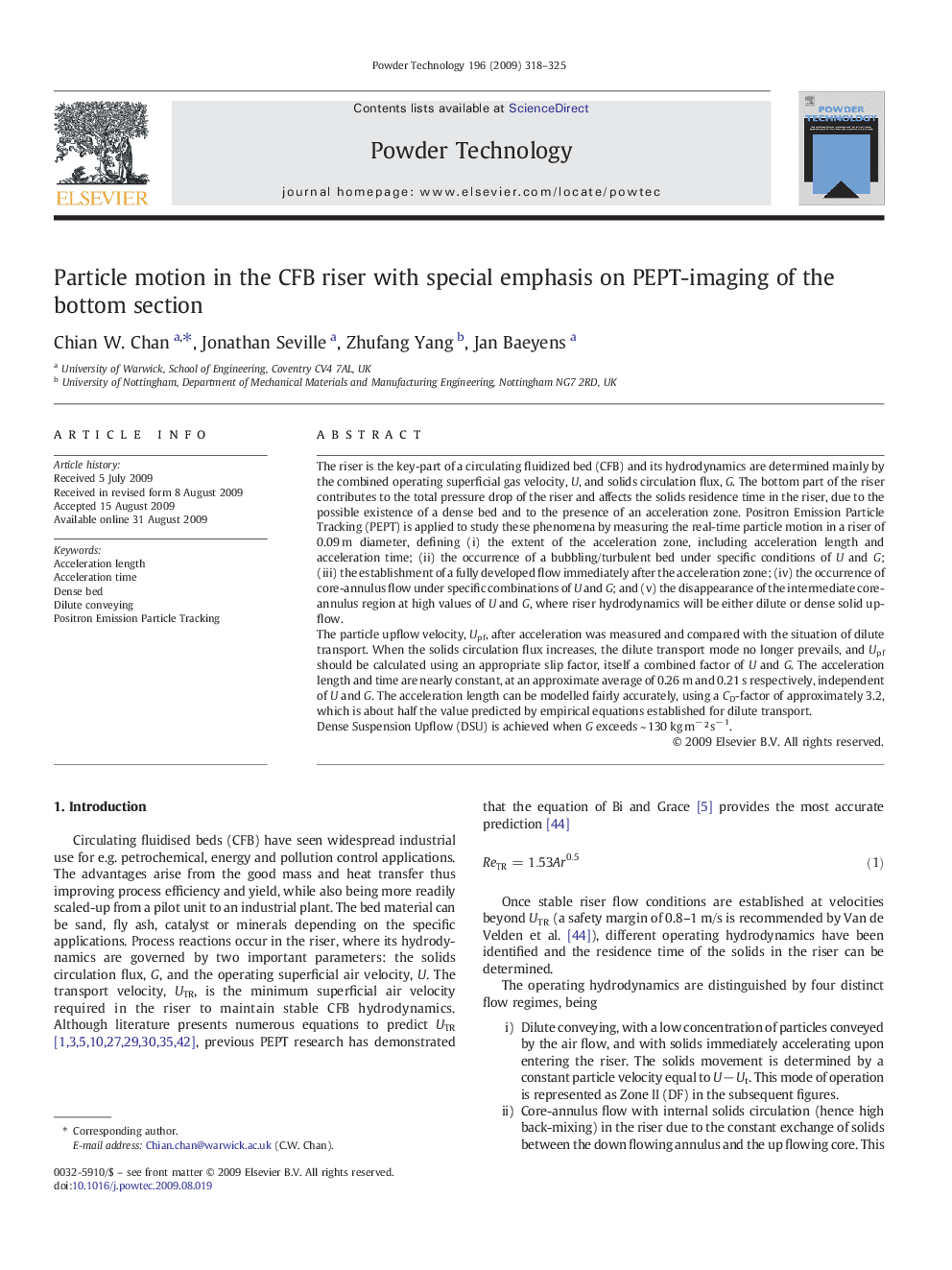| کد مقاله | کد نشریه | سال انتشار | مقاله انگلیسی | نسخه تمام متن |
|---|---|---|---|---|
| 238124 | 465742 | 2009 | 8 صفحه PDF | دانلود رایگان |

The riser is the key-part of a circulating fluidized bed (CFB) and its hydrodynamics are determined mainly by the combined operating superficial gas velocity, U, and solids circulation flux, G. The bottom part of the riser contributes to the total pressure drop of the riser and affects the solids residence time in the riser, due to the possible existence of a dense bed and to the presence of an acceleration zone. Positron Emission Particle Tracking (PEPT) is applied to study these phenomena by measuring the real-time particle motion in a riser of 0.09 m diameter, defining (i) the extent of the acceleration zone, including acceleration length and acceleration time; (ii) the occurrence of a bubbling/turbulent bed under specific conditions of U and G; (iii) the establishment of a fully developed flow immediately after the acceleration zone; (iv) the occurrence of core-annulus flow under specific combinations of U and G; and (v) the disappearance of the intermediate core-annulus region at high values of U and G, where riser hydrodynamics will be either dilute or dense solid up-flow.The particle upflow velocity, Upf, after acceleration was measured and compared with the situation of dilute transport. When the solids circulation flux increases, the dilute transport mode no longer prevails, and Upf should be calculated using an appropriate slip factor, itself a combined factor of U and G. The acceleration length and time are nearly constant, at an approximate average of 0.26 m and 0.21 s respectively, independent of U and G. The acceleration length can be modelled fairly accurately, using a CD-factor of approximately 3.2, which is about half the value predicted by empirical equations established for dilute transport.Dense Suspension Upflow (DSU) is achieved when G exceeds ~ 130 kg m− ² s− 1.
The bottom part of the riser in a circulating fluidized bed contributes to the pressure drop and the solids residence time in the riser, due to the existence of a dense bed and to the extent of acceleration zone. The acceleration zone moreover affects the overall riser hydrodynamics. Positron Emission Particle Tracking (PEPT) is applied to study these phenomena.Figure optionsDownload as PowerPoint slide
Journal: Powder Technology - Volume 196, Issue 3, 22 December 2009, Pages 318–325